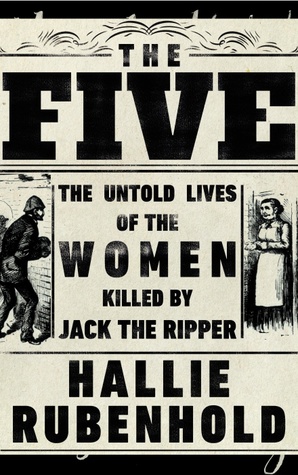
Should you want a wee bit of titillation, there is a ‘Jack the Ripper tour’ just about every day of the year. In fact, so popular is this murder tourism, that some summer evenings the streets of Spitalfields are crowded with groups of people enjoying tales of violence and brutality against women.
The ‘Ripper Industry’ is big business – tens of thousands of tourists, hundreds of books, millions of words. ‘Ripperologists’ (“you’ve got an ‘ology, you’re a scientist”) indulge in fatuous speculation on the identity of the murderer, safe in the knowledge that a) the wilder the conjecture, the more attention it will receive, and b) no one will ever know the real identity of the killer.
Go on a tour though, or read the latest spurious analysis of ‘the evidence’ and you’re unlikely to hear much about the victims, other than some hideous details of the butchery inflicted on them. You might be told their names; you’ll probably hear that they were all prostitutes, but their actual lives, their suffering, how they ended up in Whitechapel in the summer/autumn of 1888 is regarded as incidental. They are the set-dressing to a fog-shrouded melodrama.
Which is why Hallie Rubenhold’s book – The Five – is so important and has been (rightly) lauded. It is the first biography of these five women – daughters, wives, mothers, sisters – and a necessary corrective to the glamourisation of ‘The Ripper’.
I went to a talk given by the author this week, and it was an eye-opener. For example, the five – Polly Nichols, Annie Chapman, Elizabeth Stride, Catherine Eddowes and Mary Jane Kelly – were all women in their 40s. Only one – Mary Jane Kelly – might be regarded as a ‘career prostitute’, and she had been a high-class West End courtesan until a few months before her death. They were generally from the upper working/lower middle classes (“good families”). Most were literate, well-educated (for the time, for their gender), most had been in domestic service. All had been married or in stable relationships.
What unites them is their fall, and one of the most shocking realisations is that, in the Victorian era, in the richest, largest city in the richest, largest empire in the world, it only took one misstep, one unfortunate change of circumstances, one abusive partner, to take (particularly) a woman from a home, a family, a ‘comfortable’ existence to the depths of poverty – so poor in fact, that one could not afford the cheapest doss house, but had to walk the streets all night, sleeping in doorways and alleys. All five of the women were probably killed as they slept – these were opportunistic murders of defenceless female rough sleepers: they died because they were homeless.
And it goes deeper than that. The casual assumption that the women were all prostitutes both demeans them further and implies their deaths were somehow less barbarous. This sort of thinking is still distressingly present, that murdered sex workers or itinerants count less than killings of ‘good girls from good families’. Just below the surface of our 21st century sensibilities we still divide the ‘deserving poor’ from the feckless, ‘fallen women’ from the ‘girls next door’.
If you’re going to read any book about ‘Jack the Ripper’, don’t bother, and read this instead; you’ll learn much more about the struggles and pain of the 19th century. And if you want to go on a ‘Ripper Tour’ through Whitechapel and Spitalfields, may I recommend my colleague Katy Wignall’s Feminist Jack the Ripper Tour – “a chance to hear about the real women behind the glorified vision of ‘Jack’”?

